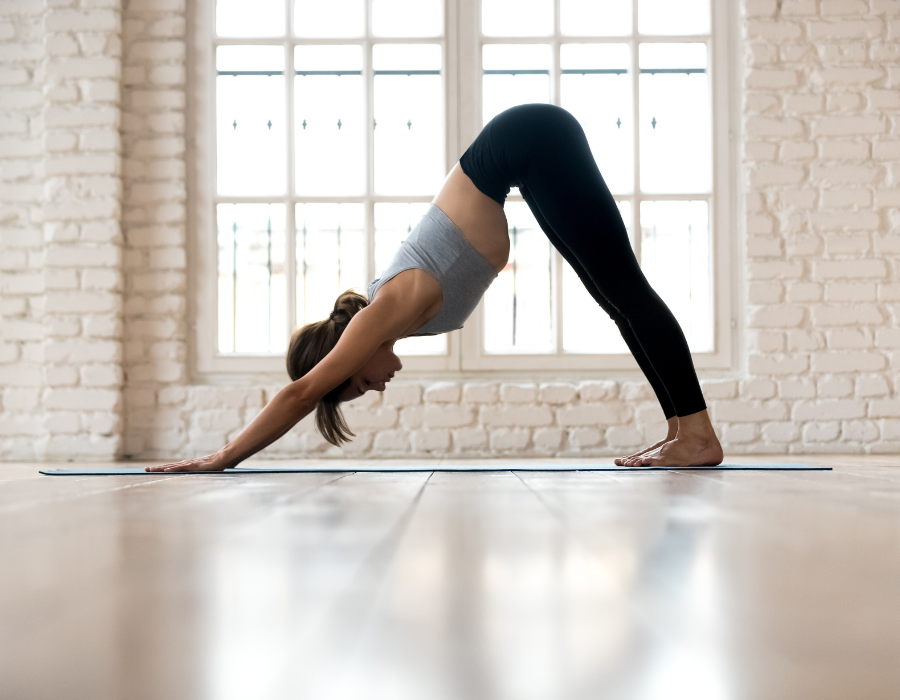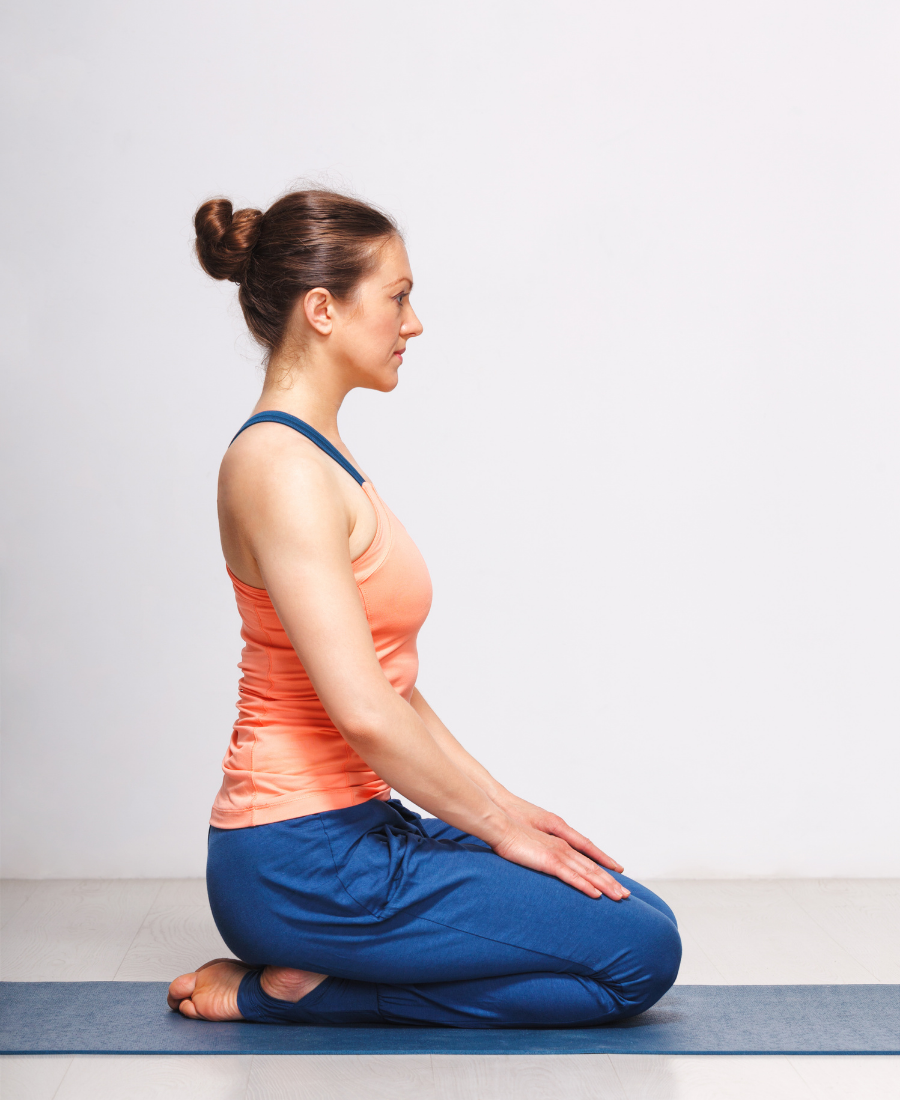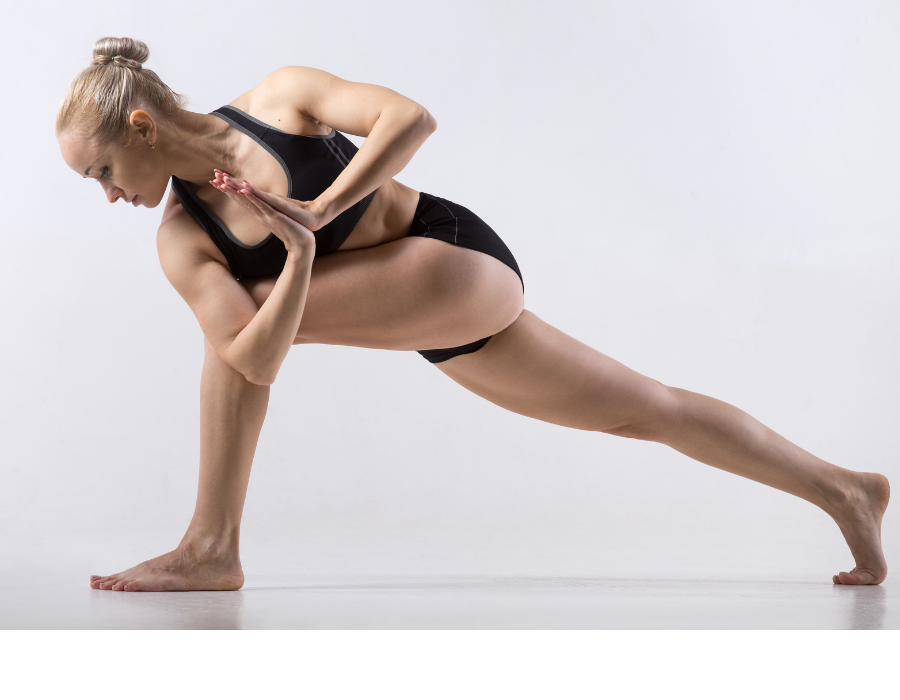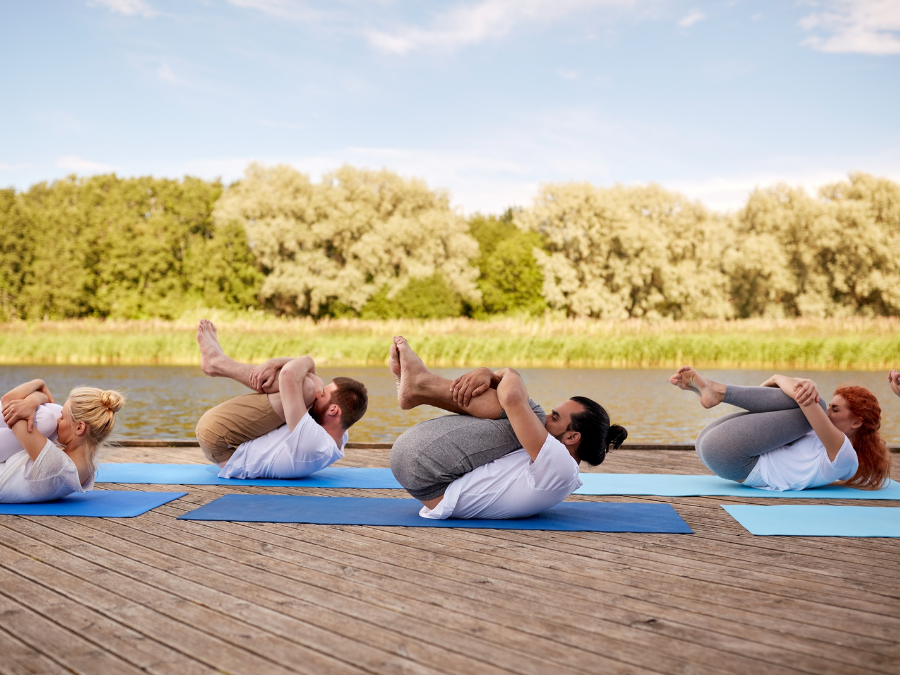Almost everybody is affected by constipation sometimes in their lives. Hectic schedules, poor nutrition choices, dehydration, lack of physical activity, and stress, can manifest in your digestive system causing either loose stools, infrequent bowel movements, or constipation. Certain over-the-counter medications can help but if you are looking for a non-medication and natural way of relieving your constipation then look no further. Practicing yoga regularly along with some dietary modifications and lifestyle changes can help you relieve gas pains and constipation. Moreover, yoga can increase the flow of blood, oxygen in the system and revitalize your body. So, just roll out your mat and give the poses mentioned in this article a try!
How can yoga alleviate constipation and other digestive troubles?
Yoga gets you moving and movement is imperative for stimulating the bowels to help the waste move through your system. The different yoga poses like the twisting poses, inversions, and forward folds massage your abdominal organs, augment blood flow, help the process of peristalsis and stimulate stools to move through your system. Regular practice of yoga can lead to healthy and regular bowel movements.
Stress is considered one of the reasons for constipation. When a person is stressed they are more likely to eat unhealthy food, get less sleep, exercise, and even forget to stay hydrated. As a result of all these things, you can get constipated. Additionally, stress is also believed to reduce the healthy bacteria in the gut that may slow digestion. It can also cause inflammation in the gastrointestinal tract, worsening your constipation. Yoga can help improve your stress response and consequently, make you get less blocked up.
Pawanmuktasana or Wind Relieving Pose
This pose is ideal for everyone, whether beginners or advanced practitioners. The pose helps release gases from the digestive tract. Pawanmuktasana improves digestion and relieves constipation.

Instructions
- Lie down flat on your back and make sure your feet are together. Place your arms beside your body.
- Inhale and as you exhale bring your knees towards your chest. Wrap your arms around your legs and clasp your hands.
- Press the thighs on your belly. Try to touch your nose to your knees.
- Hold this position for as long as is comfortable. You can also rock and roll forward and backward or from side to side a few times.
- To release the pose, bring your head down to the floor and release your arms and place your hands on the side of your body.
- Relax.
Tips
- If there is any injury in your neck you can keep your neck on the floor instead of bringing it close to your knees.
- Avoid the pose if you had any surgery recently.
Downward Facing Dog
Regular practice of this asana can enhance digestion. This pose stimulates digestion by improving blood flow in your abdominal organs and relaxing the GI tract.

Instructions
- Stand on the mat, inhale and come to your hands and knees or the table position. Make sure you have your wrist underneath your shoulders and hips above your knees.
- Now bring your hands slightly forward and spread out your fingers.
- Tuck your toes under, inhale, and as you exhale lift your knees off the floor. Engage your lower belly and draw the navel to the spine. Slowly begin to straighten your legs and do not lock your knees.
- Pressing through your hands, lift your buttocks back and up so that your body is in an upside-down V pose.
- Maintain length in your spine and keep lifting through your pelvis.
- Press down equally through your hands and heels. Draw your shoulder blades towards your tailbone and broaden across your collarbones.
- Rotate your thighs inwards and your arms externally. Relax your neck and gaze towards your feet.
- Stay for 5 to 10 breaths.
- To come out of the pose, bring your knees back to the floor and return to the initial all fours position.
Tips
- Bend the knees slightly to prevent injury.
- Do not round your spine and continue maintaining length in your spine.
- You can practice the pose against the wall also. Stand facing the wall with approximately 3 meters of distance. Now place your hands on the wall and start walking your hands down until your torso and arms are parallel to the floor.
- Do not practice the pose if you have a wrist or shoulder injury or suffer from high blood pressure. You can modify the pose by resting your head on a blanket or bolster.
Vajrasana
This is a simple sitting pose. The name of the asana comes from the Sanskrit word “Vajra” which means diamond or thunderbolt. All yogasanas are performed on an empty stomach, however, Vajrasana is the only pose that can be practiced after a meal. In fact, it is more efficacious if practiced after meals as it promotes proper digestion. The pose is also helpful in relieving and preventing constipation and also strengthens pelvic muscles.

Instructions
- Kneel on the floor and stretch your legs backward.
- Exhale, lower your body and sit on your legs. Your hips should rest on your heels and thighs on your calves. Keep your big toes and knees together.
- Straighten your spine and press down your tailbone. Gaze forward with your chin parallel to the floor.
- Relax your arms and place your hands on your thighs.
- Close your eyes and focus on your breath.
- Stay in the position for at least 2 minutes.
Tips
- If you feel any pain in the ankles release the pose and massage the ankles with your hands.
- Do not practice the pose if you suffer from severe knee surgery.
Halasana or Plough Pose
The pose stimulates the abdominal organs that improves detoxification.

Instructions
- Lie on your back on the mat and place your arms beside you with palms downwards.
Inhale and as you exhale, firm your back into the floor, draw your lower belly into your spine. - Now press your palms into the floor and lift your legs off the floor and try to take them over your head towards the floor.
- Keep your chin slightly up and support your lower back with your hands.
- Your back should be perpendicular to the floor. Press through the shoulders, arms, and feet if they are on the floor.
- Take your hips above your shoulders and tailbone reaching upwards.
- Hold this pose for a few breaths.
- Exhale and gently bring your arms and legs down.
- Relax.
Tips
- If you are a beginner then keep a blanket under the upper back so that the blanket ends in the hollow of the neck. This will give support to your neck and prevent it from flattening too much.
- Instead of keeping your legs straight when bringing them over the head, you can bend them.
- Avoid jerking while coming out of the pose.
- If you cannot get your feet on the floor try practicing the pose at the wall. Lie down with your head towards the wall and take your arms behind towards the wall. This is the distance your head should be from the wall. Lift your legs and take your feet to the wall and gently walk your way down.
- Do not practice the pose if you suffer from diarrhea.
Crescent Lunge Twist
This is a standing pose and the twisting involved helps promote bowel movement, applies pressure to your internal organs, tones them, and increases their ability to detoxify your body. The digestive organs are flushed with oxygen-rich blood which helps to remove toxins.

Instructions
- Start in Downward facing dog. Inhale and as you exhale bring your left foot forward between your hands. Your knee should be directly over your heel and bend at 90 degrees.
- Come on to the ball of the right foot and sink your hips slightly down. Raise your back knee towards the sky to stabilize. Keep the ball of the right leg firmly rooted in the ground.
- Engage the muscles of your abdomen to help you stabilize. When you feel stable, slowly draw your left hip back as you press your right hip forward.
- Inhale and raise your torso to an upright position. Take your arms over your head with your palms facing each other. Gaze up at the space between the thumbs. This is a crescent lunge.
- Now bring your arms down with hands in prayer position at your chest.
- Exhale and twist your torso to the left. Bring your right elbow to the outside of the left thigh. Press your upper right arm against your left thigh.
- Keep your gaze down, in front, or towards the sky. Keep your extended right leg straight, and lifted. Inhale and lengthen your spine and on each exhalation twist even deeper.
- Hold for a few breaths.
- Inhale and return to the center taking your arms overhead. Exhale, bring your hands back to the mat, and step back in Downward-facing Dog.
- Repeat on the other side also.
Tips
- Do not practice the pose, if you suffer from any knee, spinal injury, or high blood pressure.
- If it is too difficult to keep your back leg raised you can lower your knee down to the floor and slide your leg slightly back and place the top of your foot on the floor, instead of tucking it under.
- To make sure your hips are square place your hands on your hip bones before coming into the twist.
- Ensure your feet are hip-width apart. If they are in one line it can get difficult to balance.
- Engage the thigh of the back leg to keep it straight.
You can also try some inversions and other poses that involve twisting
- Pravittra Utkatasana
- Half Lord of the Fishes or Ardha Matsyendrasana
- Uttanasana
- Malasana
To manage stress you can meditate, practice deep breathing, and do simple poses like Shavasana.
The Takeaway
To sum up, a few minutes of yoga every day can help you keep your digestive woes such as constipation, straining, and bloating of the stomach at bay. Additionally, you will also have to make a few changes in your lifestyle. Increase your intake of water, eat more high-fiber foods, avoid caffeine and alcohol, get moving, and most important stay positive!


